Carports – shelters for vehicles covered by solar panels – are increasingly popular in various segments of the solar energy market, such as hypermarkets, shopping malls, shopping centers, colleges and residential condominiums.
The application has been gaining ground in the solar sector, not only for generating clean and sustainable energy, but also for offering a safer, more comfortable and protected parking system from the sun, generating savings on the electricity bill.
Furthermore, with the strong trend towards the introduction of electric vehicles, carports also offer business customers the opportunity to use energy to fuel their cars or motorcycles while they shop. It could even be a differentiator or selection criterion for consumers when choosing a place to make their purchases.
Vitor Tavernari, CEO of Politec, one of the Brazilian companies that works with the manufacturing of the solution, explains that sales of carports in Brazil have been increasing considerably and that orders for this solution have increased significantly. “In the first half of 2021 alone we have around 10 MWp in carport structures sold. In all of 2019, this number was 5 MWp,” he said.
Origin of the carport
The expression “carport” comes from the French term “porte-cochère”, referring to a covered portal and began to be used from the 1930s onwards as a reference to covered parking lots, but without walls.
Nowadays, the concept has become known worldwide in the field of solar energy, with the replacement of conventional roofs with photovoltaic panels. The idea is to ensure protection for parked vehicles and, at the same time, capture sunlight through the signs, transforming it into electrical energy.
Particularities
Although there are similarities with traditional photovoltaic systems installed on roofs, carports have some differences. The first of these is the fact that the projects need to be customized, as the widths of the spaces vary from location to location, in addition to the fact that the position of the pillar is critical for opening the doors and facilitating the goal.
The height of the system also varies according to the type of vehicle: for smaller vehicles, such as cars and motorcycles, it must be 2.3 meters, while for larger vehicles, such as vans, it must be greater than 2.7 meters . Depending on the customer, a seal between the rain panels may also be requested.
According to João Nunes, president of the company WNunes, installations on roofs are cheaper, as they only require the structure to fix the plates. In turn, ground systems end up being used in large plants and also in places where the roof is not sufficient for the number of system plates or would not withstand the load generated by the plates.
Carport structures are more expensive than the other two solutions, but they provide a set of benefits for the enterprise. “The carport covers parking areas, generating shade for vehicles, protecting them from the sun and rain, creating well-being for the people who circulate there, also adding to the ecological marketing of the project”, stated Nunes.
Gustavo Lopes, engineer at Grupo SSM, also commented that the engineering and assembly projects of the carports present some differences when compared to a conventional ground installation, such as the fixing of the poles, the routing of cables and the location of the inverter. “It is recommended for fixing pillars that a straight line is drawn for perfect alignment. To pass cables, we can use the inside of the U profile using the fixing tape”, he commented.
Types of solar carport
Currently, there are two types of carports, which differ according to the structure used. The first is the system with a simple swing gantry, which offers coverage in just one direction, for spaces located in front of walls or entrances.
The second is the carport with double swing gantry, which offers coverage in both directions. The larger size of this structure compared to another also allows for the fixing of more plates and, consequently, more electrical energy generation.
Attractiveness in commercial establishments
According to Francisco Vendramel, engineering manager at L8 Energy, the installation of solar carports in the country will become natural over the years. “Today, a business that aims to satisfy its customers invests in installing a parking lot, because a huge portion of the population uses cars and needs a place to park,” he said.
The engineer emphasizes, however, that it is not enough to simply provide parking, as customers prefer covered spaces. This is where the carport comes in, which, in addition to protecting vehicles, also generates savings on electricity bills for business owners.
Vendramel explains that the carport has the same benefits and the same durability as a traditional photovoltaic system, which is 25 to 30 years, and that only some characteristics change in relation to the modules. The engineering manager at L8 Energy also reinforces the need for people to research companies before installing the technology.
According to him, more than analyzing the price, it is necessary to check the credibility and quality of the service and products offered in order to avoid the famous headache.
Carport installation
Like any structure that is subject to the action of climate and time, it is necessary to observe the location of the work, the types of buildings in the vicinity and the types of soil for the foundation, geography of the land and the available space.
According to João Nunes, in projects where parking is already defined, in addition to the points already observed, it is necessary to “define a model compatible with the project, measure the size of the spaces in order to avoid the pillars of the structure being in the middle of a space or damaging the opening of the vehicle door”, he explained.
Rafael Avila, account manager for the Energy segment at ARaymond Brasil, emphasizes that to fix the modules in a carport system, both a solution for structures fixed from below and one for a conventional roof can be used.
Nunes also draws attention to the importance of good nailing of the stakes next to the system and the proper passage of cables. “Our carport, for example, comes with a cable guide. In each third that holds the plate it is possible to house the cable so that it is hidden and routed”, he explains.
“In carports that do not have this solution, the correct option would be to route the cables by installing a conduit or cable tray so that these cables reach the piping points of the inverters”, he highlights.
Nunes also draws attention to the installation of piles in suitable soils. “Many people end up thinking that the structure can simply be fixed like a slab or a floor, when in fact this is not the case. There are forces that need to be considered and for this there needs to be an adequate foundation to receive this”, he highlights.
Payback and other differences
The price of a complete carport system varies greatly depending on the size of the project, the inverters and the solar panels used. However, according to João Nunes, it is certain that the payback time, that is, the return on investment, is greater in a carport system than in a conventional system.
“To give people more or less an idea, our price for a ground structure is in the range of R$ 200.00 per plate. As for the carport, it goes to the R$ range of 500.00 per plate. So, it's two and a half times more in terms of structure. In other words, this return will certainly be a little more”, he highlights.
Nunes also points out that the high price of the carport in relation to conventional ground and roof systems is justified. “When you place solar panels on a roof, technically the structure is already ready. You just place the profiles, with an anchor to be able to install the plates”, began the explanation.
“In a ground-based plant, you have to create a fixation to raise the plate so that it is not too close to the ground, which results in a higher cost (in relation to the roof system)”, he continued.
“The carport is a roof, that is, a building, and needs higher support and greater exposure to the winds. To do this, it needs to be more robust, which implies the use of more steel or aluminum, and an increase in the final price”, he concluded.
Importance of a good seal
The carport system, despite being attractive, like any other technological equipment needs some simple care, but which cannot go unnoticed. In some cases, the client requires a good fence to be made in order to provide shelter when it rains.
According to Vitor Tavernari, the sealing system can be made with foam or special rubbers, which offer UV protection and prevent water infiltration from rain.
One of the companies that offer solutions for the system is PHB. “Our difference is the gutter profiles, where the rubbers work vertically on the side of the module. Basically, the water that flows between the module and the profile is captured by the lower gutter and runs laterally, which guarantees complete sealing of the system”, explains Jânio Taveira, the company's specialist in the structures segment.
Solar carports and electric mobility
In the electric vehicle sector, recent projections indicate that the fleet of electric-powered cars is gaining ground in the international market. A study by BNEF (Bloomberg New Energy Finance), for example, estimates that more than half of the world's vehicles will be electric by 2040.
Read too
Electric vehicles will represent a US$ 46 trillion market by 2050
In Brazil, there are already carports installed with an electric car charger. One example is the system installed at Ribeiro Solar, a Solar Edge partner. The project is located at the company's headquarters, with a 9.2 kW photovoltaic inverter that already includes a vehicle charger incorporated into the equipment.
At the same time as supplying the company's electric vehicle, the complete system is capable of supplying energy to the Ribeiro Solar headquarters building, which is located in Curitiba (PR).
Another pioneering project in the country was BYD, which delivered the first electric bus powered by solar energy in the State of Ceará, in November last year. This was only possible thanks to the installation of a carport made up of 183 solar panels, which charge the batteries between trips.
Examples of carports installed in Brazil
In the commercial sector, the use of carports is also a reality in projects such as supermarkets and shopping centers. This year, the company Tekno Solaris implemented the system in an imported products grocery store in São Carlos (SP).
“The owner has a relatively large parking area, but practically no roof. What we did was cover this area and make the system reach the energy autonomy that our client needed”, explained Alexandre Serpentino, managing partner of the company.
According to him, despite the short period of use, the result has been satisfactory. “The client is happy because he was able to cover his energy demand and use this as a marketing tool, bringing more comfort to his customers and showing concern for the environment”, he highlighted.
Those who also started to work with the carport system in their activities were large Brazilian companies, such as Sabesp (Companhia de Saneamento Básico do Estado de São Paulo), which has been taking advantage of available operational areas to install photovoltaic plants and generate energy for the treatment of domestic sewage.
The first plant was installed two years ago in Mogi Mirim (SP) and the system uses direct radiation from the sun to generate electricity in the sewage treatment infrastructure of SESAMM (Serviços de Saneamento de Mogi Mirim), the concessionaire responsible for the city's sanitation. In total, the technology has generated savings of more than R$ 20 thousand per month.
In Campinas (SP), the Alphaville Dom Pedro 3 condominium was the first to adopt the carport system in the city. The technology was installed shortly before the pandemic, in December 2019, in the parking lot near the leisure areas.
The structure, with 230 solar panels and four 15 kW inverters, replaces the conventional roof and, while housing the cars, produces energy. The complete return on investment is expected to occur in the first half of 2023.
Claudinei Aranha, the condominium's commercial manager, explains that the technology was implemented to meet the energy demand of the residential's collective areas, such as the social club and the electronic security and concierge systems.
“With this installation, we saved around R$ 8 thousand per month, which gave us the opportunity to invest resources in maintenance and hiring labor. It’s been nothing but joy,” he commented.
International applications
The growth in the application of carports is not exclusive to Brazil, as the same thing happens in other countries. Disneyland Paris, an entertainment resort in Marne-la-Vallée located around 30 km from the French capital, will host a new 17 MW solar garage project that will be built in stages until 2023.
Another example of international application of the technology involved IKEA, a company specializing in the sale of low-cost home furniture. In February this year, the project completed a 1.35 MW solar garage at one of its units in the city of Baltimore, in the United States.
Because of the good results obtained, the company reported that it plans to build seven more similar projects in other stores, in partnership with DSD (Distributed Solar Development) in New York. The other arrays are on track to be completed later this year.
In January, DSD closed a credit line of US$ 300 million, implying that it will continue to announce new projects in the near future. Overall, the solar garages will help IKEA achieve its goal of being 100% renewable and initial results indicate that the establishment saw a reduction of 84% in its purchased energy demand between September and December 2020, which equates to a saving of 57%.


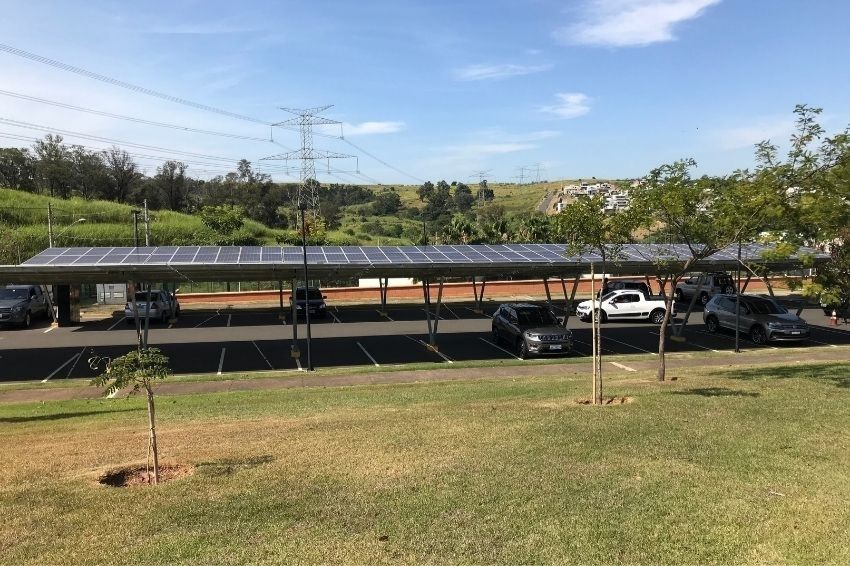


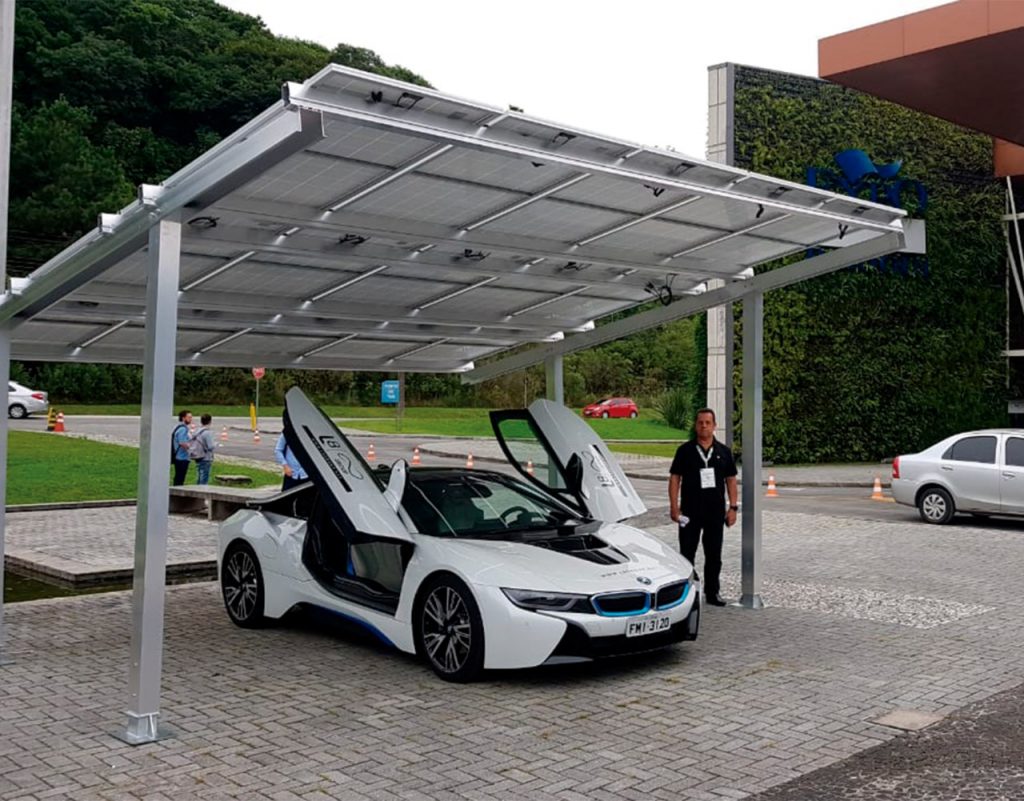



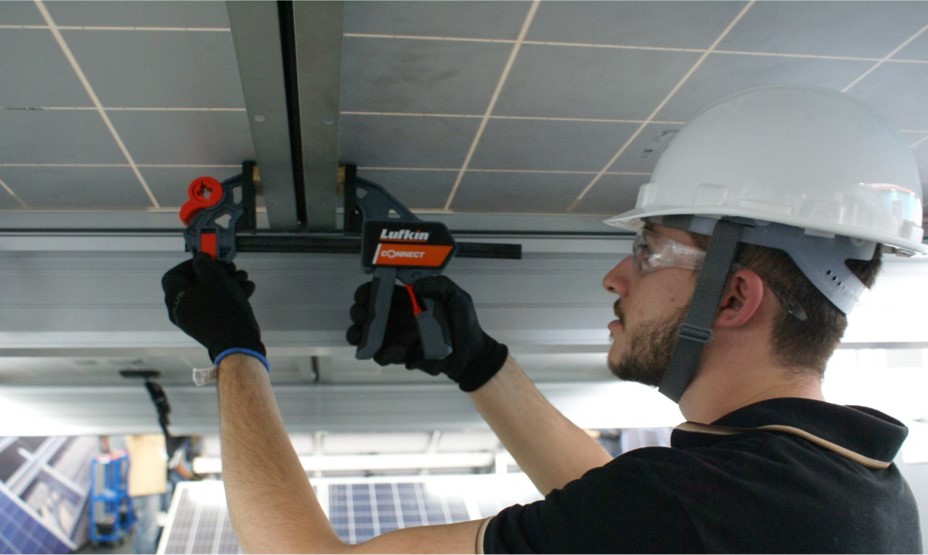
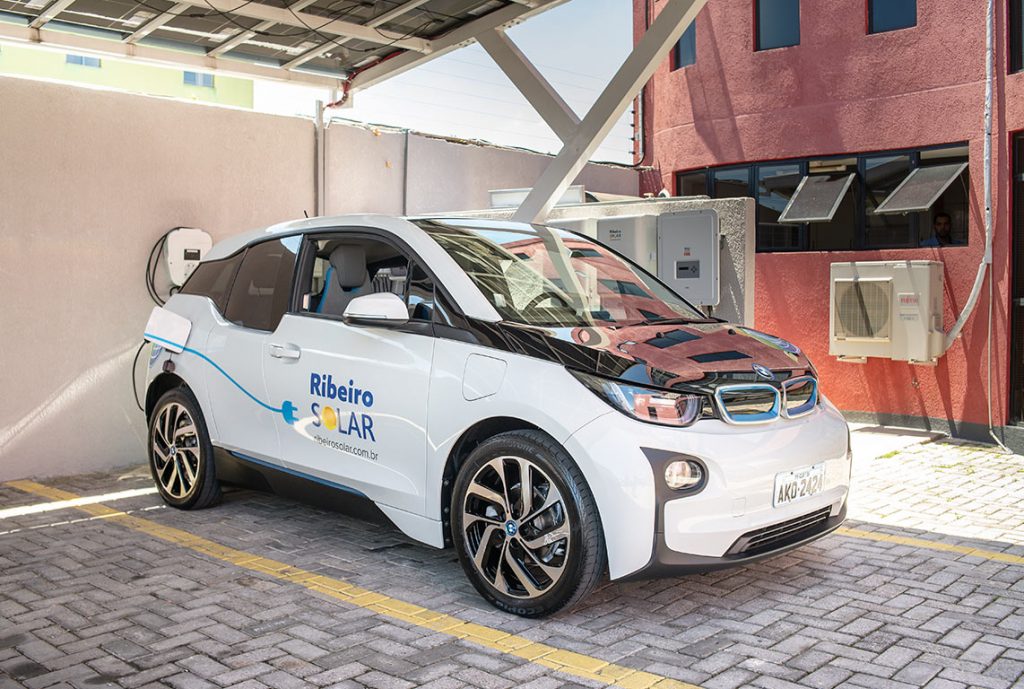

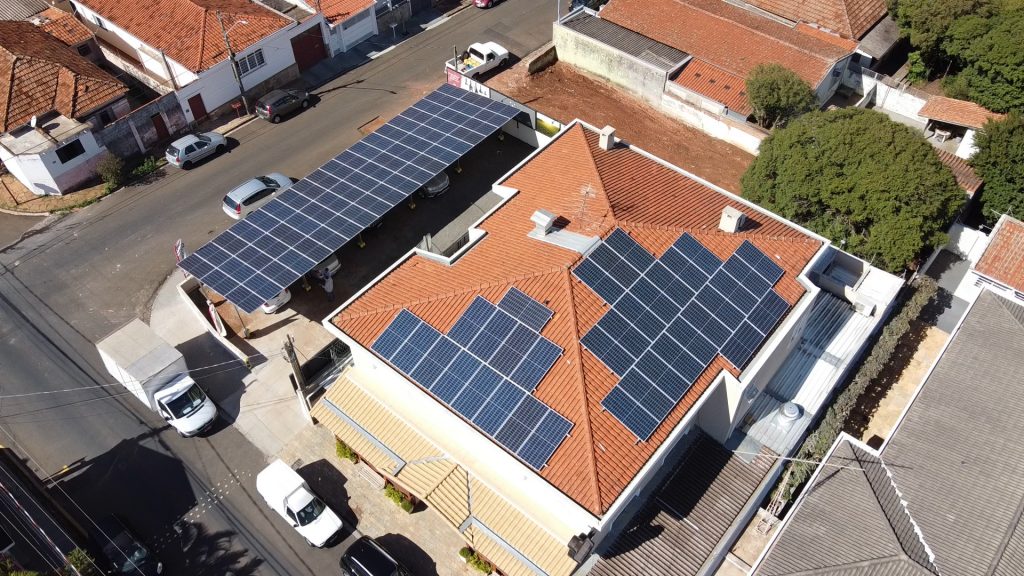
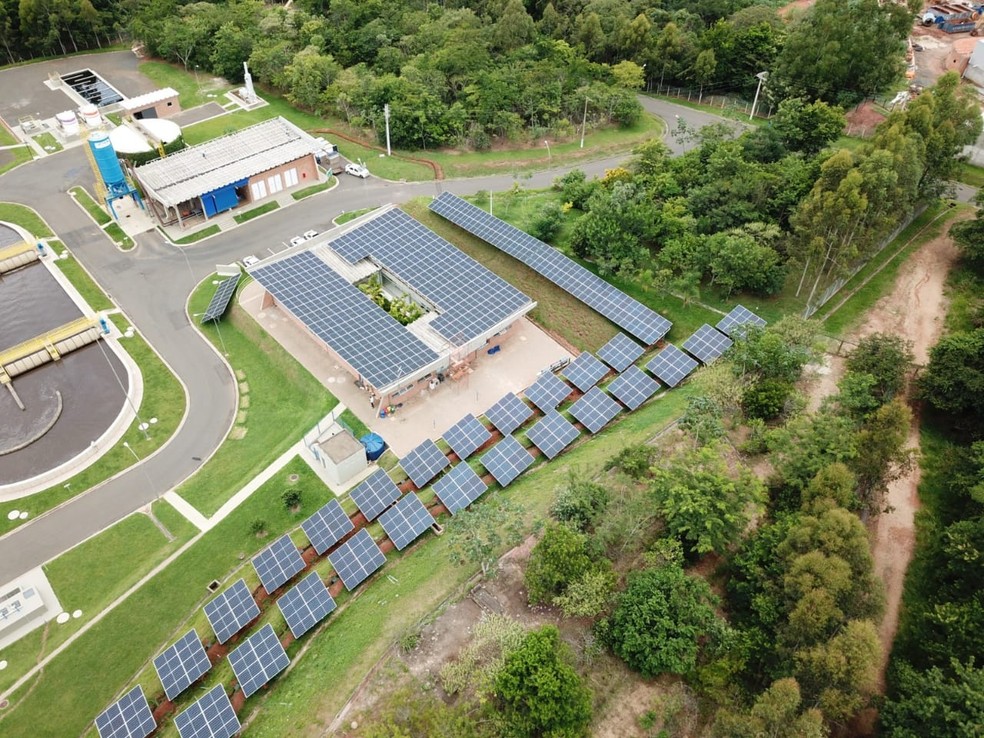
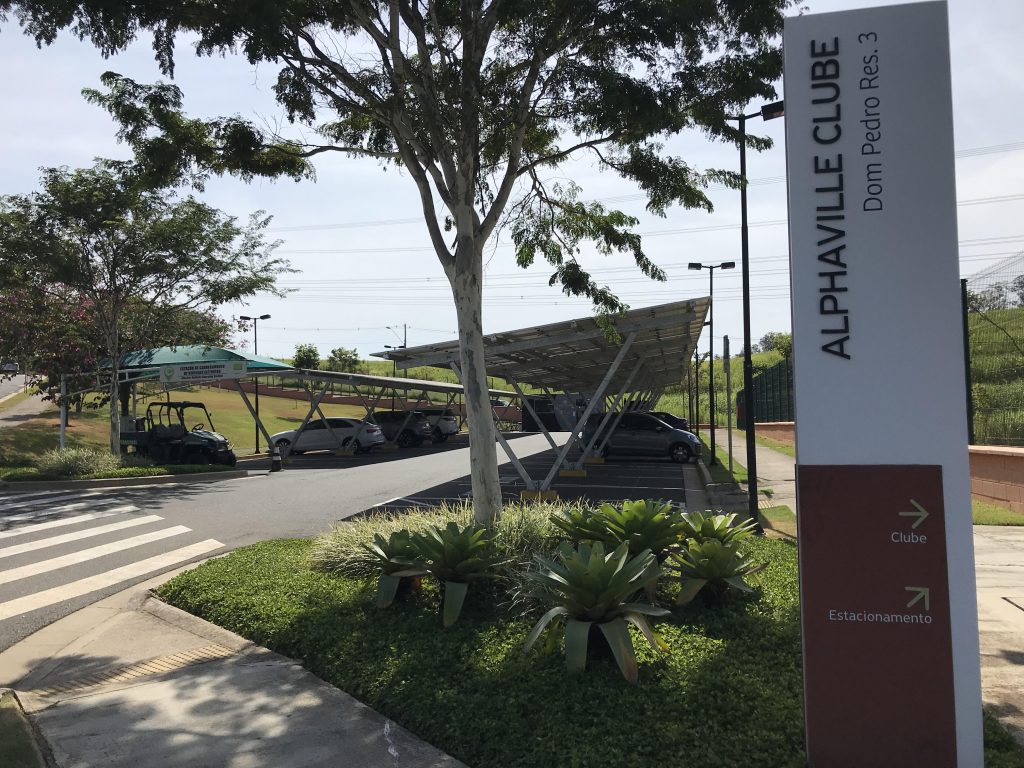














One Response
Very good, I would like to receive updates